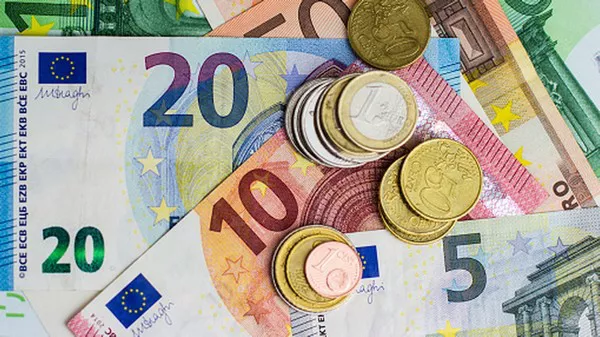In the vast world of international finance, various currency pairs are traded every day. The EUR/GBP pair is one such combination that holds significant importance in the world of forex trading. This pair represents the exchange rate between the Euro (EUR) and the British Pound (GBP), making it a crucial tool for traders, investors, and economists. In this article, we will delve into what EUR/GBP means, its importance, factors that influence it, and its historical context.
What is EUR/GBP?
EUR/GBP is a forex currency pair that signifies the exchange rate between the Euro (EUR) and the British Pound (GBP). The value of EUR/GBP represents how many British Pounds one Euro can buy. It is quoted in the foreign exchange market as 1 EUR/GBP = X, where ‘X’ is the exchange rate. For example, if the EUR/GBP exchange rate is 0.85, it means one Euro is equivalent to 0.85 British Pounds.
Importance of EUR/GBP
The EUR/GBP currency pair holds significant importance for several reasons:
Economic Indicator: The exchange rate between the Euro and the British Pound is a crucial economic indicator. It reflects the relative strength or weakness of the Eurozone and the United Kingdom’s economies. A rising EUR/GBP rate indicates Euro strength or Pound weakness, while a falling rate signifies Pound strength or Euro weakness.
Trade and Investment: Businesses and investors often use the EUR/GBP rate to assess the relative attractiveness of the Eurozone and the UK for trade and investment. A favorable exchange rate can make exports more competitive or boost foreign investments.
Brexit Impact: The EUR/GBP pair gained tremendous attention during the Brexit negotiations. The uncertainty surrounding the UK’s departure from the European Union led to significant fluctuations in the exchange rate. Traders and investors closely monitored developments in the Brexit process to anticipate currency movements.
Portfolio Diversification: Currency traders often include EUR/GBP in their portfolios to diversify risk. Since it represents two major European economies, it can help hedge against exposure to other currency pairs.
Factors Influencing EUR/GBP
Several factors influence the EUR/GBP exchange rate. Understanding these factors is essential for traders and investors to make informed decisions. Here are some of the primary drivers of EUR/GBP movements:
Macroeconomic Data: Economic indicators such as GDP growth, inflation rates, employment figures, and central bank policies have a significant impact on EUR/GBP. Positive data from the Eurozone or the UK can lead to an appreciation of their respective currencies.
Interest Rates: Interest rate differentials between the European Central Bank (ECB) and the Bank of England (BoE) play a vital role in determining EUR/GBP rates. A higher interest rate in one region makes its currency more attractive for investors, leading to an appreciation of that currency.
Political Developments: Political events, such as elections, referendums, and government policies, can affect the exchange rate. For example, the Brexit process had a profound impact on EUR/GBP, causing substantial volatility.
Market Sentiment: Market sentiment, often influenced by news and geopolitical events, can lead to short-term fluctuations in the EUR/GBP pair. Traders react to news and events, causing rapid changes in exchange rates.
Trade Relationships: Trade relationships between the UK and the Eurozone can impact EUR/GBP. Trade tensions or agreements can lead to changes in the exchange rate.
Historical Context
Understanding the historical context of EUR/GBP can provide insights into how this currency pair has evolved over time.
The Birth of the Euro: The Euro was introduced in 1999, replacing various national currencies in the Eurozone. This marked a significant step in European economic integration. The EUR/GBP exchange rate came into existence with the introduction of the Euro.
The Euro’s Ascendancy: In the early years of the Euro, it often strengthened against the British Pound. The currency’s stability and the UK’s economic challenges contributed to this trend.
Brexit Uncertainty: The Brexit referendum in 2016 introduced a period of extreme volatility in the EUR/GBP pair. The uncertainty surrounding the UK’s decision to leave the European Union caused sharp fluctuations in the exchange rate.
Post-Brexit: After the UK officially left the EU, the EUR/GBP rate continued to be influenced by trade agreements, economic developments, and political events in both regions.
Conclusion
The EUR/GBP currency pair is a crucial tool in the world of forex trading and international finance. It represents the exchange rate between the Euro and the British Pound, offering insights into the relative strength of these two major European economies. Traders, investors, and economists closely monitor the EUR/GBP rate, as it reflects economic indicators, interest rate differentials, political developments, and market sentiment.
Understanding the factors that influence EUR/GBP and its historical context is essential for making informed decisions in the forex market. Whether you are a seasoned trader, an investor, or someone looking to grasp the intricacies of international finance, the EUR/GBP pair is a key element to consider in your financial toolbox.


